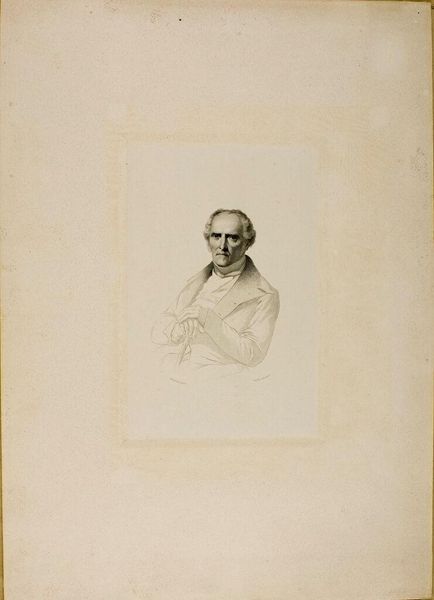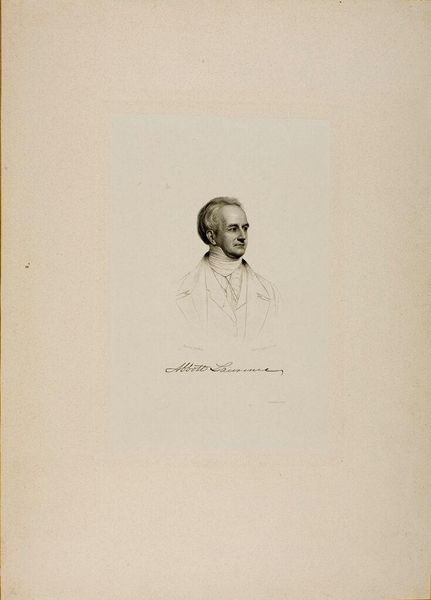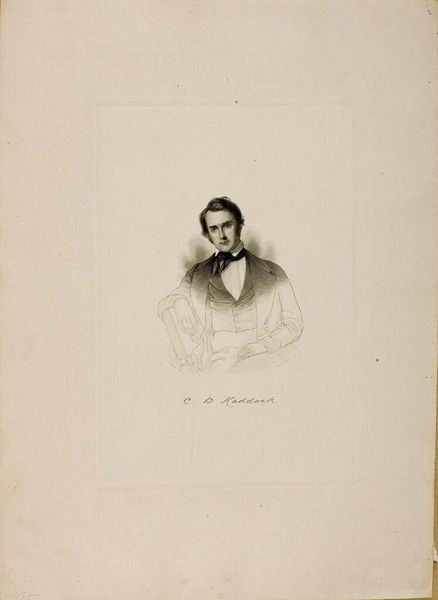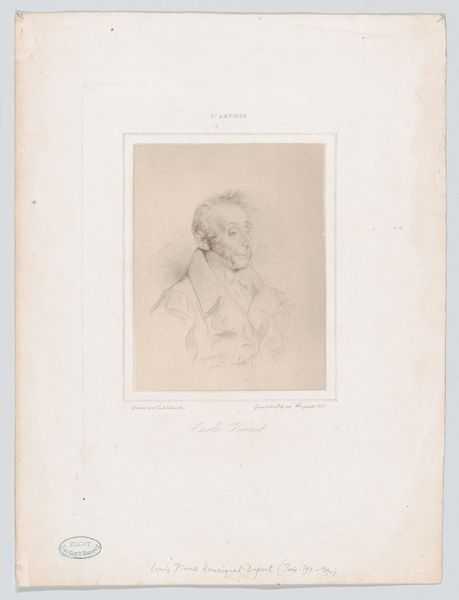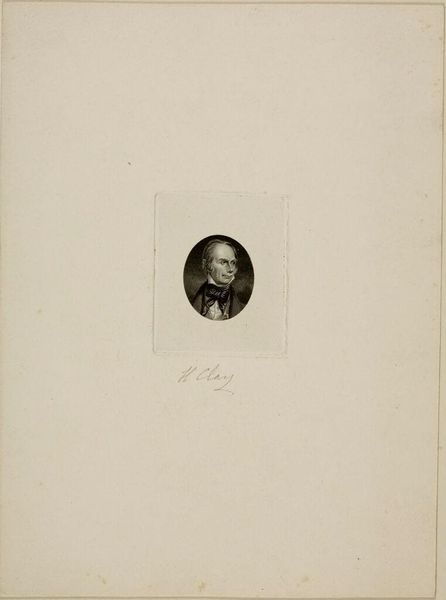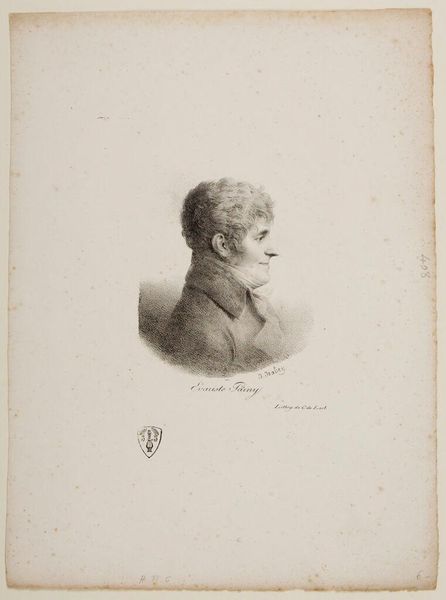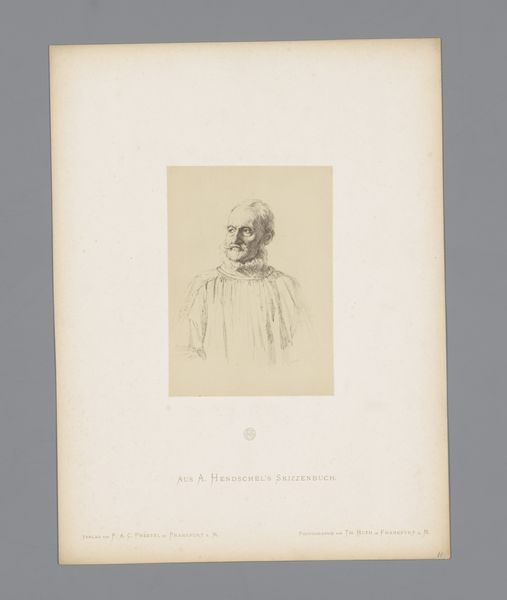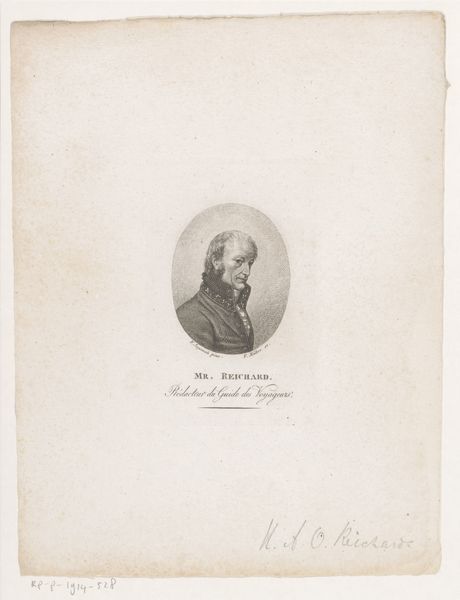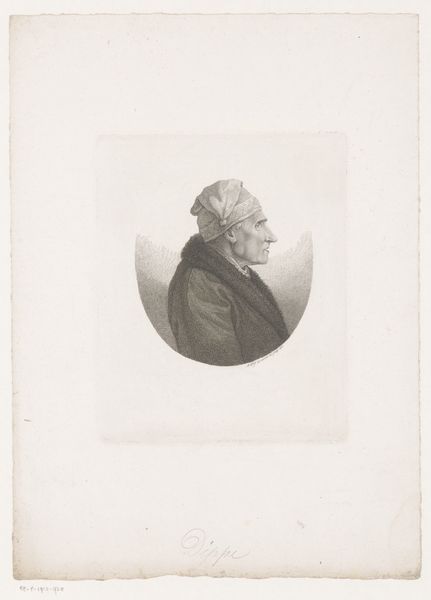
Copyright: CC0 1.0
Curator: Here we have Joseph Andrews’s “Fourier, socialist,” a portrait of the 19th-century utopian thinker Charles Fourier. Editor: There’s a delicacy to the rendering here. You can really see the layering and pressure of the graphite used to model the face. Curator: Considering Fourier’s advocacy for radical social change, particularly regarding labor and communal living, it's interesting to see him rendered with such bourgeois respectability. Editor: True, and the labor of producing such a portrait—the paper, the graphite, the time invested—all speak to a specific mode of valuing a person and their likeness. The means of production tell their own story. Curator: I think it reveals something about how even radical figures are often assimilated into the existing power structures through representation. Fourier's ideas were revolutionary, but here, he's framed within established artistic and social conventions. Editor: That's a great point. Ultimately, this portrait is a fascinating testament to both Fourier's legacy and the complex ways in which we commemorate figures of dissent.
Comments
No comments
Be the first to comment and join the conversation on the ultimate creative platform.
